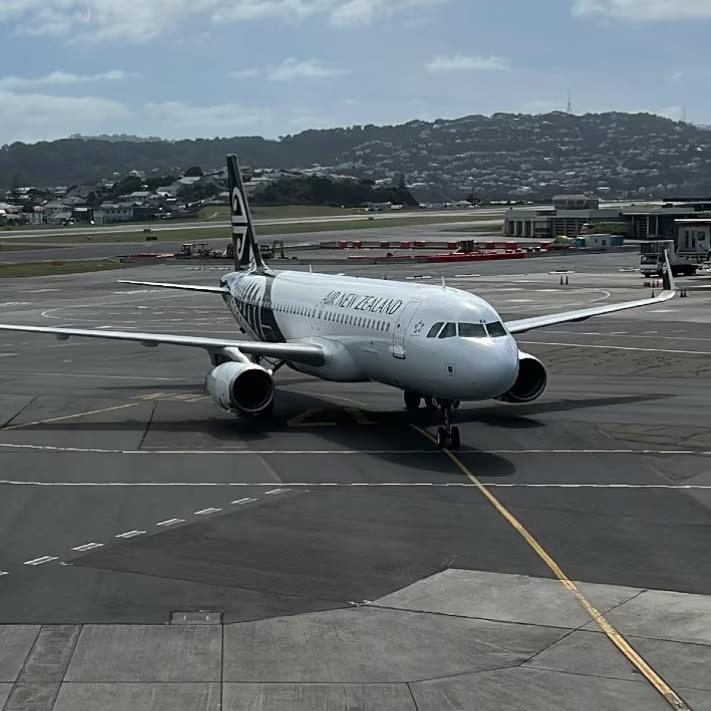
Is New Zealand facing a brain drain?
New Zealand’s population growth in the December quarter was 0.5%pa, having slipped as low as 0.4%pa in September last year, the slowest rate of growth since about 1989. The large migration inflow of previous years has been replaced with the first net migration outflow since the aftermath of the 2011 Christchurch earthquake. The current net outflow is being driven by a continued tailing off in migrant arrivals. But as borders reopen, we have mounting concerns that 2022 could herald an exodus of younger Kiwis. If that exodus occurs, the difficulty for businesses of finding labour will become even more extreme.
First net outflow since the Christchurch earthquake
For the year to January 2022, Stats NZ estimates a net migration outflow of around 7,500 people, with an annual net outflow now estimated to have been occurring since March 2021. This outflow is the first net loss of people from New Zealand since the effects of the Global Financial Crisis were compounded by the displacement of the 2011 Christchurch earthquake, which saw a net outflow persist between April 2011 and March 2013 (see Chart 1).
The net loss of people from New Zealand is a complete reversal from the large net migration gains that New Zealand experienced between 2015 and 2019, with an average net gain of 59,600 people per annum over that period.
Looking into the details of migration flows shows that the shift is being driven by the collapse of arrivals into New Zealand, with a 67% decline in annual migrant arrivals between January 2019 and January 2022. Departures have also fallen, but not nearly as steeply, down 41% over the same period (see Chart 2).
A lack of young talent arriving
The age profile of migration flows into and out of New Zealand highlights the effects on growth in New Zealand’s workforce. Net migration of people aged 20-29 has seen the largest change, falling from an average inflow of around 15,700pa between 2015 and 2019 to an outflow of 5,300 people at the start of 2022 (see Chart 3).
New Zealand’s border closures and pause to any visa processing or approvals have hit hard, with arrivals of all migrants, and especially young people, collapsing harder than departures. Total migrant arrivals for all ages are down 54% from the previous record annual low (data is available from 2001-2020), with arrivals in the 20-29 age group down 66% from the previous low. Using historic migration data based on arrival and departure cards suggests that the current annual total for arrivals could be at its lowest since 1970!
Departures have held up better, and they were less elevated prior to the pandemic anyway. Annual departures are “just” 26% lower than the previous record low (2001-2020) across all age groups, and down 47% for the 20-29 age group. Many older people are leaving though, with the number of migrant departures for those aged 60+ the highest it’s ever been (see Chart 5).
These figures highlight that New Zealand’s workforce is probably losing some of its more experienced operators, without the ability to replace these workers with new energy.
Labour market pressure cooker faces uncertain supply
Taking all these components together, our view is that New Zealand’s current migration challenge isn’t a brain drain of talent – yet. Instead, it’s the complete collapse of the inward migration of skills, particularly from younger people. This trend means there’s no ability to either replace lost talent or scale up recruitment and employment at a time when demand is high and the labour market is stretched.
Yesterday’s announcement of reopened borders for New Zealand is likely to allow a resumption in higher levels of migrant arrivals. MIQ is virtually obsolete, and there will be strong demand from New Zealand businesses to bring in talent to fill skills shortages and other gaps in the labour market. Yet it’s not clear how quickly that boost in arrivals can occur, given changed visa requirements from the government and the challenge to process higher volumes of applications by Immigration NZ.
Although the timing and scope of the recovery in migrant arrivals is uncertain, we see a mounting risk of higher departures over the next 12 months. There are many New Zealanders who would normally have migrated overseas for an OE or work during the last two years but have not done so. In fact, migrant departures of New Zealanders have fallen more steeply than the number of Kiwis returning from overseas (see Chart 6).
We estimate there’s around 40,000 Kiwis who would have usually left New Zealand over the last two years but haven’t because of COVID-19. Many are now likely to be champing at the bit to shift overseas.
It’s appearing increasingly likely that migrant arrivals into New Zealand might take longer to return towards prior levels, with bottlenecks in the system, high housing and living costs, and new visa requirements all likely to limit incoming numbers. At the same time, a build-up of New Zealand talent could be looking to move offshore during 2022 and 2023, having waited patiently for two years to do so.
A looming brain drain, after a lack of new talent
This outlook for a slower return of migrant arrivals, but a less restricted increase in migrant departures, could well see New Zealand in 2022 and 2023 with a brain drain of talent. This outflow would be particularly problematic for the labour market, coming on the back of two years of strong demand, during which businesses have been unable to source new talent from overseas and build a larger workforce with the required skills.
We remain of the view that in the longer-term, net migration will turn positive and push back towards around 40,000pa. However, we increasingly anticipate that the difficulty sourcing talent could get even more acute this year before it starts to get better.






























